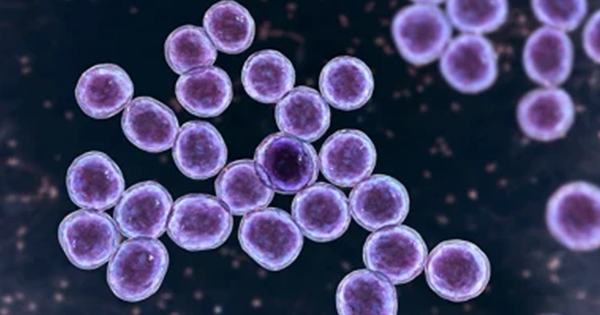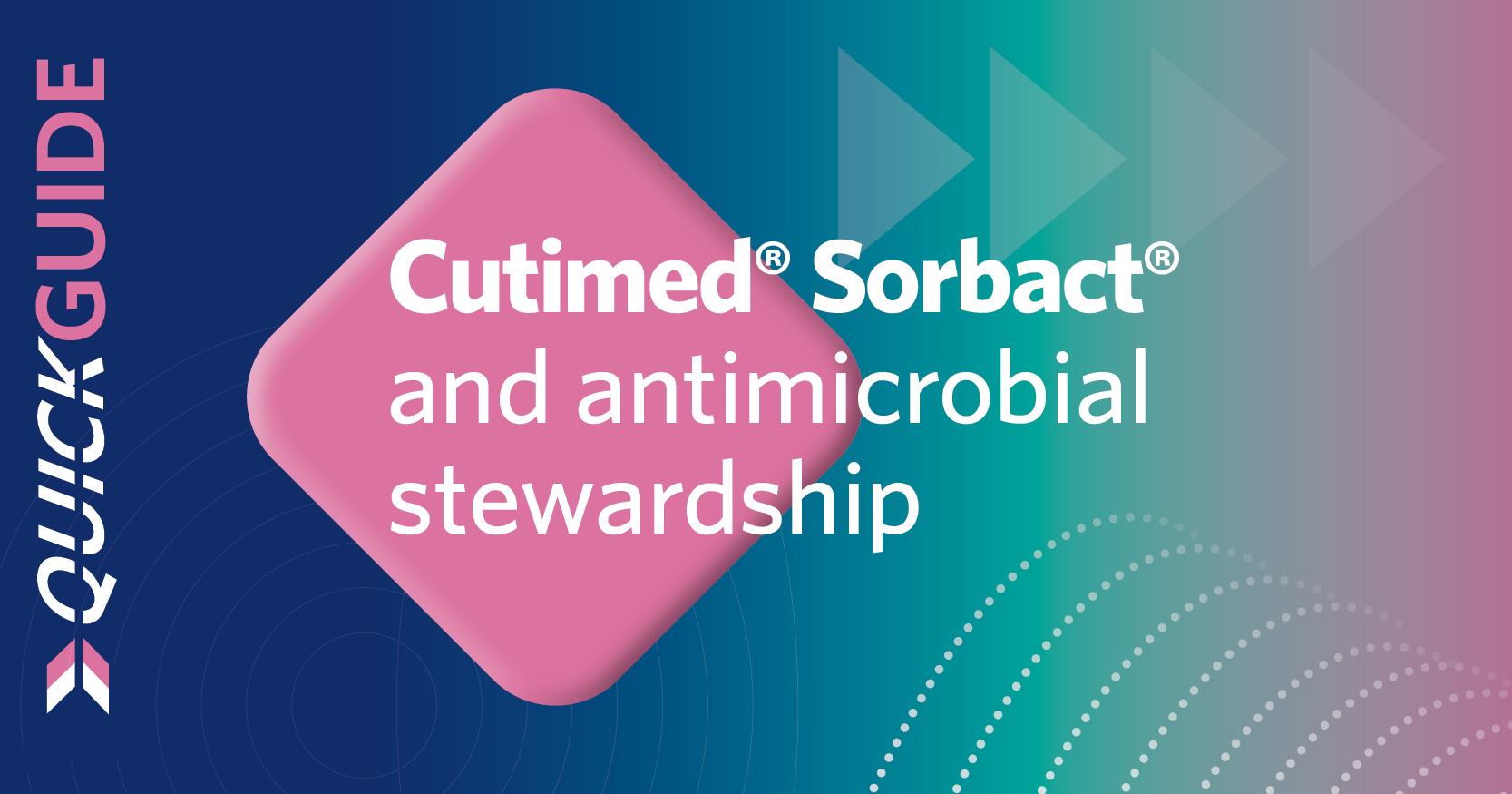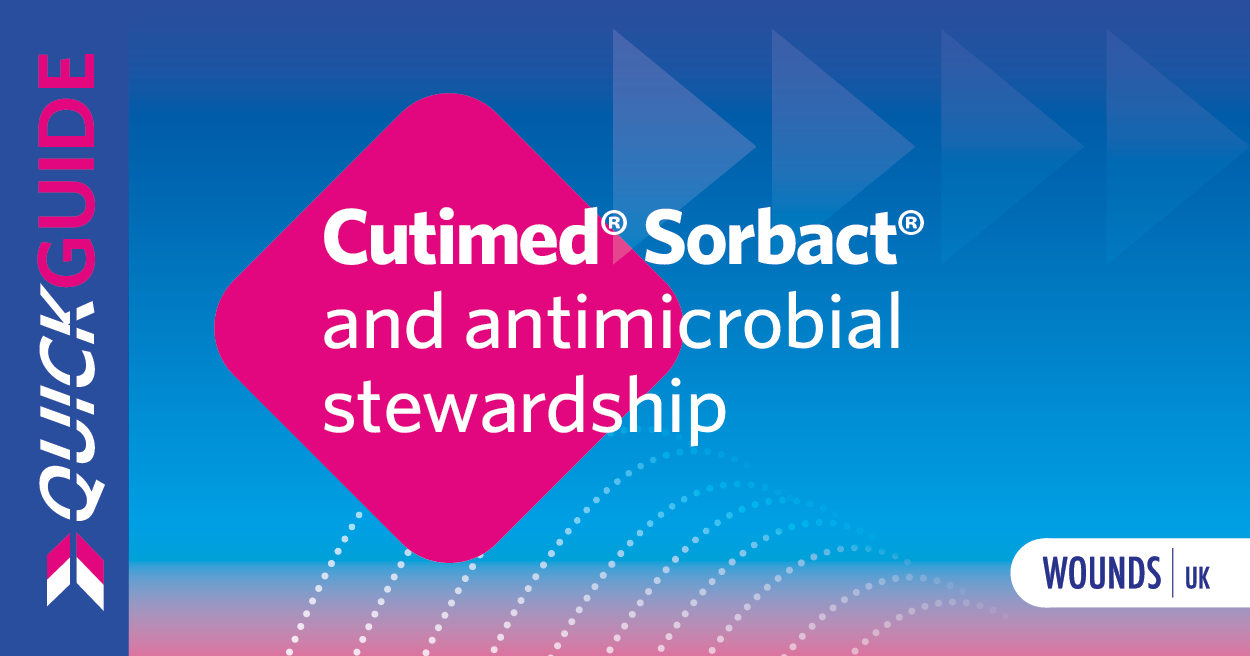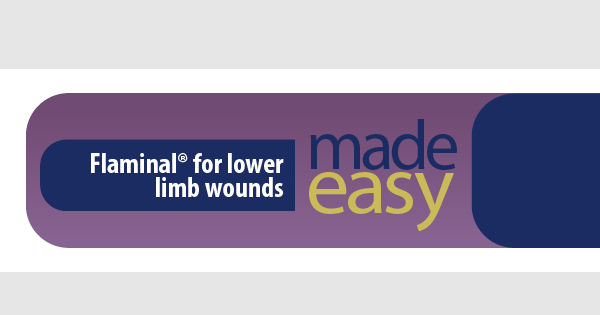Methicillin-resistant Staphylococcus aureus (MRSA) became a significant cause of healthcare-associated infections in the UK following the emergence of epidemic strains in the 1990s, with surveillance showing particularly high numbers of bacteraemia in the early 2000s. This led to highly effective infection prevention programmes, which resulted in an 80% reduction in MRSA bloodstream infections by 2011 (Duerden, 2012). Several key factors were involved in this reduction, including increased surveillance, improved isolation procedures, antibiotic stewardship and the use of care bundles, with ongoing reductions linked to successive national directives (Duerden, 2012; Duerden et al, 2015).
The latest UK guidelines focus on suppression protocols for other body sites, providing a comprehensive literature review to help steer the creation of national and local policies (Coia et al, 2021). However, there is a sparsity of evidence-based written guidelines on the specific decolonisation of MRSA-positive wounds that are not acutely infected. This has implications not only for wound management, but also for the potential spread of infection in the hospital setting.
One study found that surfaces tested near a patient with an MRSA-positive wound or positive urine were six times more likely to be contaminated than when the bacterium was identified at other body sites (Thomas, 2004). Although these specific findings have not been replicated more recently, this study highlights the increased risk of environmental contamination from colonised wounds.
Topical antimicrobial treatments (excluding topical antibiotics) can be beneficial, not only in controlling microbial burden, but also antimicrobial stewardship, by potentially reducing the necessity for exposure to antibiotics (International Wound Infection Institute [IWII], 2022).
This article will explore the efficacy of antimicrobial dressings and the use of antiseptic irrigation and cleansing in addressing MRSA colonisation in wounds, as an alternative to topical Mupirocin being applied to an otherwise healing wound that is colonised with MRSA, and not showing signs of local or systemic infection.
MRSA
S aureus is a Gram-positive bacterium that was first identified in the 1880s (Weston et al, 2017). The National Institute for Health and Care Excellence (NICE) guidance on MRSA in primary care, states that S aureus colonises the gut, skin and nose of up to one-third of people and can be harmless (NICE, 2018). However, if the bacteria opportunistically enters the body, for example through a wound, it can cause disease ranging from mild to life-threatening, and includes illnesses such as skin and wound infections, endocarditis, pneumonia and bacteraemia (UKHSA, 2020).
Most strains of S aureus are sensitive to more common antibiotics, meaning that they can be treated effectively. These strains are sometimes referred to as methicillin-sensitive S aureus (MSSA). However, some strains have become resistant to a number of antibiotics, notably beta-lactams, a group of commonly used antibiotics that includes penicillin, amoxicillin, oxacillin and meticillin (Office for National Statistics, 2013). These strains are known as MRSA. People with MRSA are 64% more likely to die of their infection when compared with those with MSSA (World Health Organization [WHO], 2014).
MSSA colonisation is unlikely to be treated, but MRSA-colonised wounds require a more aggressive approach because of the risk of developing infections that can be difficult to treat and the threat of cross-transmission (Thomas, 2004).
Colonisation
One of the many functions of the skin is to act as an external barrier, protecting the body from infection by creating a non-specific physical defence mechanism (Weston et al, 2017). There are large quantities of microorganisms residing on the skin of healthy people, second in number only to those found in the gut. Bacterial species make up the largest number of microorganisms, and are also referred to as the skin microbiome. They can include bacteria such as Staphylococcus (Lee and Oakley, 2014), a known skin commensal and potential pathogen (Thomas, 2004).
Colonisation is defined as the presence of microorganisms on the skin that are proliferating, but with no current clinically significant immune response from the host (Kramer et al, 2018). When the skin is broken, pathogens, including colonising bacteria such as S aureus, can opportunistically invade. If the immune system is compromised, host defences are unable to adequately destroy microbes, and this can lead to invasion and proliferation of microorganisms, invoking a local, spreading and potentially systemic host response (IWII, 2022). In severe cases, MRSA can gain entry to the bloodstream from an infection site such as a wound, leading to bacteraemia and possible death (Newton, 2010).
MRSA guidelines
The updated UK guidelines for the prevention and control of MRSA in healthcare facilities were published in 2021 (Coia et al, 2021). Separate guideline covers treatment and antimicrobial stewardship (Brown et al., 2021). Although there are several references to wounds throughout the healthcare facilities guidelines, they focus on swabbing wound sites, and considering side room isolation, for example, for patients with large open wounds (Coia et al, 2021). This highlights that there is a risk of cross transmission of MRSA from wound sites, but gives no practical advice on wound management.
The evidence is evaluated for the use of several topical decolonisation methods, including povidone-iodine in combination with other treatments for the prevention of surgical site infections. One randomised controlled trial reported low incidence of MRSA surgical site infections, but the authors of the guidelines noted that the evidence was weak (Coia et al, 2021). Little attention is given to existing wounds or wound care in the guidelines, despite recognition that MRSA carriage is often persistent at sites such as wounds where skin is damaged.
In the treatment guidelines, Brown et al. (2021) highlight that much has changed since the publication of the previous guidelines in 2008, including a fall in the incidence of MRSA in hospitals, and the availability of new antibiotics for the treatment of Staphylococcus infections. Despite this, they note the most striking finding from their review was ‘the dearth of published evidence in this area’. The document gives detailed guidance on recommended antibiotic treatments, including treating abscesses and other skin and skin structure infections; however, no attention is given to the dressing of wounds and skin breaches. Management of MRSA in chronic wounds is highlighted as an area in need of further research and evidence; however, it is not specified whether this refers to MRSA-colonised or infected wounds.
A gap in the evidence exists where wound care does not fit with these latest guidelines. Wound care is not mentioned directly under de-colonisation and does not necessarily require systemic or topical antibiotic intervention in the absence of acute infection. Therefore, no distinct guidance currently exists to inform best practice around the most appropriate management of MRSA-colonised wounds, and this has the potential to result in a lack of consistent care, as well as possible missed opportunities for infection prevention and antimicrobial stewardship.
Antimicrobials
The word ‘antimicrobial’ is used as an umbrella term to describe an array of substances that inhibit the growth of, or kill, microorganisms. This occurs through either chemical or mechanical effects, and can include antibiotics, antiseptics, disinfectants, antivirals, antifungals and antiparasitics (IWII, 2022). Not all wounds require the intervention of antimicrobials; however there are instances during the healing process, when their use is appropriate to avoid adverse events and achieve a favourable outcome for both the patient and their wound. This use must be judicious and applied alongside the ‘upholding [of] the principles of antimicrobial stewardship’ (IWII, 2022).
Antimicrobial resistance (AMR) has been declared by the WHO as one of the top threats to global public health currently facing humanity (WHO, 2023). AMR is defined as the ability of bacteria to undergo genetic changes to avoid the effects of antibiotic agents (Ayello et al, 2012). Drug resistance is driven mainly by the overuse and misuse of antimicrobials (WHO, 2023). Infection prevention can be key in combating AMR and is a focal point in the UK AMR National Action Plan for 2024–2029, which has the aim of reducing the unintentional exposure to, and use of, antimicrobials (HM Government, 2024).
If infection cannot be prevented, then infection control measures are needed to contain and prevent cross-transmission. It is also possible to treat early localised infections with more conservative management such as antimicrobial dressings, with the intention of reducing the use of topical or systemic antibiotics.
Antiseptics
Antiseptics are described as substances that have been designed for use on living tissue, which can include open wounds, and can take many forms including liquids and impregnated dressings (IWII, 2022). Antiseptics have a biocidal or disruptive effect on bacteria (IWII, 2022). A combination of phenoxyethanol solution and 0.1% octenidine is appropriate for the treatment of MRSA colonised wounds, but is not the only option (Kramer et al, 2018).
Chlorhexidine is recommended for body decolonisation in MRSA (Coia et al, 2021); however, it is not advocated for use in open wounds due to a risk of tissue damage (IWII, 2022). Several other antiseptics that are suitable for wounds have been found to be effective against MRSA in in vitro studies, including copper, dialkyl carbamoyl chloride (DACC), honey, octenidine, silver and polyhexamethylene biguanide (IWII, 2022).
A 2014 in vitro study looked to demonstrate reduction in multiple strains of MRSA by a DACC-coated dressing, concluding that wound bioburden decreased due to the high binding capacity (Ronner et al, 2014). The authors highlighted the importance of antibiotic stewardship, as well as the potential risks associated with the presence of MRSA in wounds.
Natarajan et al (2001) presented a case of successful MRSA wound decolonisation with honey, in an immunocompromised patient with a leg ulcer, demonstrating rapid healing alongside MRSA eradication. Mamaet al (2019) studied the effect of honey on clinical isolates obtained from infected wounds, including those found to be MRSA positive, in an experimental in vitro study. They concluded that the honey had both a bacteriostatic (prevents bacterial growth) and bactericidal (kills bacteria) effect on MRSA.
The use of Octenidine (active ingredient Octenidine dihydrochloride), to cleanse and irrigate woundsis well documented and it is recommended for MRSA skin decolonisation by Coia et al (2021) if chlorhexidine or mupirocin are not feasible due to allergy or intolerance. Its use in therapeutic cleansing of the wound bed, whereby debris, contaminants, and microorganisms are removed, is supported by the IWII, which noted that it has a broad spectrum of action against several bacteria, including MRSA (IWII, 2022). A 2015 study assessed the efficacy of once-daily rinsing of wound areas using Octenilin wound irrigation solution, as part of a broader Octenisan-based suppression regimen, for patients with known MRSA colonisation. The result was complete eradication of MRSA in 67% of patients (Danilevicius et al, 2015).
Silver
Strohal et al (2005) looked at the ability of nanocrystalline silver dressings to act as an efficient anti-MRSA barrier, to prevent transmission. Their research was carried out both in vitro and in vivo and they demonstrated total clearing of MRSA bacteria using agar plates with silver dressings applied at varying intervals. In the clinical study, seven patients were recruited with a total of 10 wounds. Wound swabs were taken before dressing application and at regular intervals coinciding with dressing changes in order to establish the potential anti-MRSA effect of the dressings. The dressings were also swabbed testing for penetration on the upper surface, and thus potential for spread. It was found that in 95% of the total 37 observations, the dressings demonstrated an absolute or almost absolute barrier to MRSA, and the silver dressings were 67% effective (surface wound swab) at reducing or clearing MRSA from the wound itself.
Newton (2010) detailed interventions put in place in order to reduce the number of MRSA bacteraemias in an NHS Trust after root cause analysis identified that a high number were attributable to wounds. Screening was introduced on admission for all wounds, as well as local policy recommending the use of nanocrystalline silver-coated dressings for one week incorporated into the regimen for MRSA decolonisation, if found to be positive. The author reported a very successful outcome following the interventions, with trust wide MRSA bacteraemia associated with wounds reducing from 12 in the year prior to intervention, to none in the time measured following the introduction of the strategy (April–September 2009). This was attributed in part to the use of a silver dressing, as well as increased overall staff awareness (Newton, 2010).It is over a decade since this work was published, and unfortunately it does not seem to have reached wider implementation or been the focus of further research attention.
Following an evidence review, Woodmansey and Roberts (2018) summarised that effective topical antiseptics can reduce the need for systemic antibiotics when used alongside local procedures and can also represent an effective infection control strategy when implemented in conjunction with other measures to reduce cross transmission of organisms already resistant to antibiotics.
Ulkur et al (2005) performed a comparative study of topical antibacterials (fusidic acid 2%, chlorhexidine acetate 0.5% and a silver coated dressing) on the full thickness burns of rats swabbed with MRSA. They found that silver dressings prevented systemic MRSA spread and limited MRSA on eschar, although did not remove it entirely.
Conclusion
MRSA is easily spread in healthcare settings, with consequences still presenting a significant cause for healthcare-associated infection. Based on the available literature reviews, guidelines, and studies, the consensus among authors and academics is to describe a distinct paucity of high-level research surrounding the efficacy of antimicrobial treatments in wound care.
Despite immediate concerns about antimicrobial resistance, no national guidelines currently exist to steer best practice in the de-colonisation of MRSA positive wounds that are not showing signs of infection. In the face of a lack of reliable randomised controlled trials to evidence such guidelines, it has been suggested previously that a pragmatic approach would be beneficial (Leaper, 2011).
An example of this is represented in the work of Newton (2010), an experienced clinician who as part of a multiprofessional team was able to implement a change in practice incorporating the use of antimicrobial silver dressings, leading to a significant positive impact on infection rates. In the absence of specific robust evidence, it appears this pragmatic approach should still be advocated in practice when managing MRSA-colonised wounds, not displaying overt acute infection.
Although this paper has only looked at silver and a limited number of antiseptics, all topical antimicrobials need to be assessed and considered for appropriateness in reducing or eliminating the carriage of MRSA in wounds. The ongoing screening of wounds for MRSA with no treatment guidelines when patients are found to be positive represents a gap in practice and a missed opportunity, not only to prevent acute infection and cross transmission, but also to support the imperative need for antimicrobial stewardship amidst the increasing threat of antibiotic resistance. We urgently need further research in this area.





